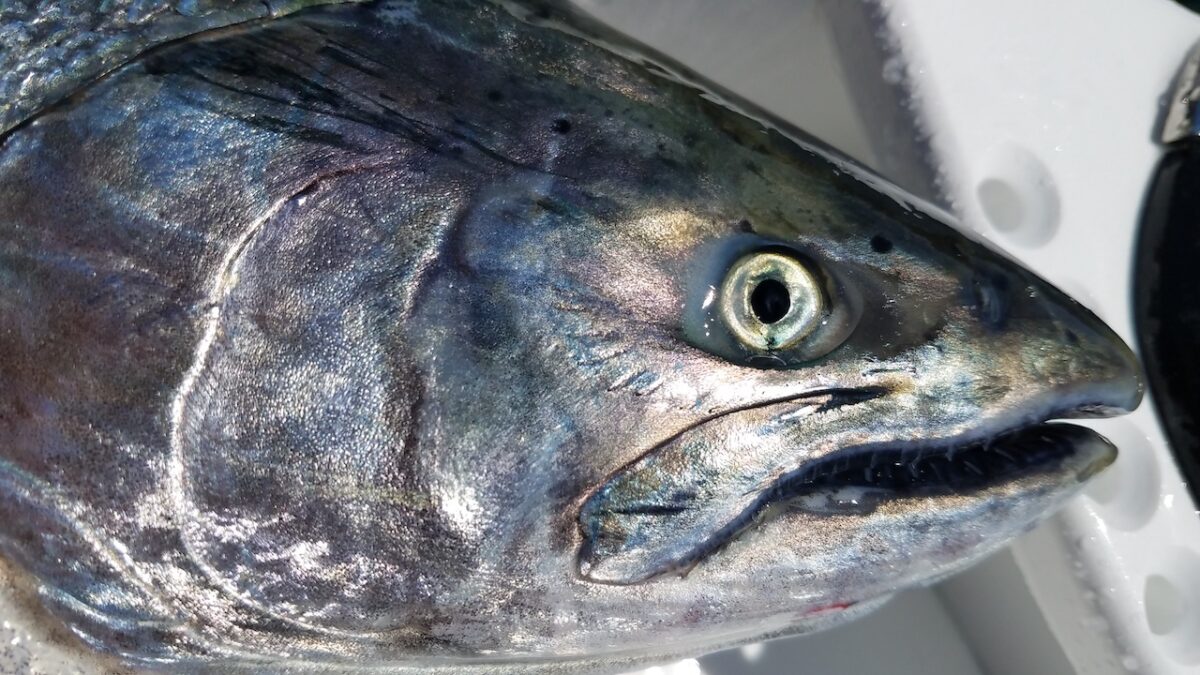
North Of Falcon 2025 Begins Later This Month; Chances To Comment On WA Salmon Seasons
THE FOLLOWING IS A PRESS RELEASE FROM THE WASHINGTON DEPARTMENT OF FISH AND WILDLIFE
Fishery managers with the Washington Department of Fish and Wildlife (WDFW) have scheduled opportunities for the public to provide input in 2025-2026 state-managed salmon seasons, beginning with a hybrid statewide forecast meeting on Friday, Feb. 28 in Olympia.

The meeting, part of the season setting process known as North of Falcon, is just one of more than a dozen in-person, hybrid, and virtual meetings scheduled over the next two months to discuss Washington salmon fisheries. North of Falcon refers to waters north of Oregon’s Cape Falcon, which marks the southern border of management of Washington’s salmon stocks, including Puget Sound, Strait of Juan de Fuca, Columbia River, and coastal areas.
WDFW will consider input from recreational and commercial anglers and those interested in salmon fishing, while state fishery managers work with tribal co-managers to craft 2025-2026 fisheries.
“The Washington salmon season-setting process is an important time for us to hear from the public as we develop the upcoming salmon fisheries with tribal co-managers,” said WDFW Director Kelly Susewind. “Salmon recovery is our top priority and drives the development of these sustainable salmon fisheries. We will continue to provide recreational and commercial harvest opportunities where salmon populations are healthy enough to sustain them.”
“As treaty tribes in Western Washington begin the annual North of Falcon planning process with state co-managers, our negotiations remain challenged by declining salmon populations,” said Ed Johnstone, chairman of the Northwest Indian Fisheries Commission. “While we can’t recover these stocks with fisheries management alone, we all need to recognize that we need to make difficult decisions to achieve conservation. Weak stock management must include leaving some fish in the water to account for increasing uncertainty caused by other factors such as habitat degradation, climate change and marine mammal predation.”
WDFW will present initial salmon forecasts developed by WDFW and tribal co-manager fisheries biologists on Feb. 28 from 9 a.m. to 3 p.m. at the Office Building 2 Auditorium, 1115 Washington Street S.E. in Olympia. The main session of the Feb. 28 meeting will be available to watch via Zoom webinar. Participants must register in advance.
WDFW and tribal forecasters use a suite of scientific data, including watershed sampling and monitoring, ocean indicators, and previous year returns, to estimate the number of salmon and steelhead that will return to Northwest waters, and how many fish will be available for harvest.
In addition to attending meetings, the public can participate in the state’s process including:
- Online comments: The public can now provide general comments on potential 2025-2026 North of Falcon recreational fisheries, coastal commercial fisheries, and Puget Sound commercial fisheries. Additional comment opportunities on specific seasons and fisheries will be available as forecasts and proposed season summaries are made available.
• Virtual meetings and daily briefings: During the final days of negotiations, state fish managers plan to hold briefings each day, which will be available via virtual meetings at the April 10-15 meetings.
For a full timeline of the state’s North of Falcon process, including a public meeting schedule with opportunities to participate in meetings and provide public feedback, visit the new WDFW North of Falcon webpage. WDFW-hosted meetings will be held in-person or in virtual and hybrid formats for the public to watch or listen. For key terms and suggested resources refer to the WDFW’s North of Falcon FAQs and Glossary Information.
This process occurs in tandem with Pacific Fishery Management Council (PFMC) public meetings to establish fishing seasons for salmon in ocean waters three to 200 miles off the Pacific coast. The PFMC will discuss preliminary options for ocean fisheries during its March 6-11 meeting and is expected to adopt final fishing seasons and harvest levels at its April 10-15 meeting. More information on meetings is available on PFMC’s website.
All members of the public are invited to share their perspectives and participate in WDFW public feedback opportunities regardless of race, color, sex, age, national origin, language proficiency, religion, sexual orientation, gender identity and/or expression, status as a veteran, or basis of disability.
